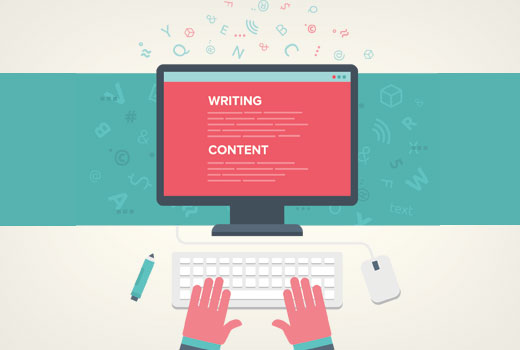It can be exciting and, at the same time, overwhelming to look for a blog website theme. This also holds when designing your blog. It’s challenging, yes, especially if it’s your first time to actually tackle such an endeavor.
While it’s true that you can design your blog by simply adding a small number of widgets after installing a theme, you have to really understand the principles of good design if you’re serious about your website and if your ultimate goal is for it to stand out visually.
Here are some quick tips on how to get started choosing the best WordPress theme design for your blog:
- Consider your blog’s purpose. What is your blog about? Who is your target audience? Once you know your blog’s purpose, you can start to narrow down your choices for a theme.
- Choose a theme that is responsive. This means that your blog will look good on all devices, including desktop computers, laptops, tablets, and smartphones.
- Choose a theme that is easy to use. You should be able to customize the theme without any difficulty.
- Choose a theme that is compatible with your plugins. If you use plugins, make sure that the theme you choose is compatible with them.
- Choose a theme that is well-designed. The theme should be visually appealing and easy to navigate.
- Choose a theme that is affordable. There are many great themes available for free or for a low price.
- Choose a theme that is popular. Popular themes are often well-designed and well-supported.
- Read reviews. Before you choose a theme, read reviews from other users to see what they think of it.
- Preview the theme. Most theme providers allow you to preview a theme before you install it. This is a great way to see how the theme will look on your blog.
- Get feedback. Once you’ve chosen a theme, ask your friends, family, and colleagues for their feedback.
By following these easy tips, you can easily start to choose the best WordPress theme design for your blog.
Once you grasp what makes not only a good blog theme, but also an excellent design, you can already start working on it. Your understanding of good website design and theme will also help you successfully find the right web design agency in case you want to outsource the work.
Below are six in-depth blog theme and design tips for you to ponder while you get started.
How To Choose The Best Theme
The following are the considerations you have to make when choosing a theme:
1. Your Blog’s Goals

What do you want or are trying to achieve with your blog? It’s the very first thing that you have to think about because it will have a significant impact on the theme that’s best for you.
Also, keep in mind that it’s a total waste to have a blog that doesn’t convert, and installing a theme that only focuses on function will, more often than not, negatively impact the look of your website. That being said, strive to strike a balance between your blog’s look and feel, as well as how well it performs.
2. The Functions You Need

Map out the type of functions you think your blog might need later on. It’s the next thing that you have to consider. Well, you actually don’t have to make a list of everything that you need, but having some idea goes a long way in helping you choose the right theme.
When finding the best theme for your website, some of the things you have to factor into are the following:
- Browser Compatibility
Make sure that all browsers support the theme you’ll choose. Don’t forget that your blog will be visible to visitors from different parts of the world. This is an important consideration since you’ll never know what specific browser your readers will use.
- Plugins Availability
You need plugins to enhance the features and functionality of your website. You don’t want to be trapped in one theme’s default features, so make sure to choose one that supports most, if not all, major plugins.
- An SEO-Friendly Theme Structure
The theme for your blog should be an SEO-friendly one if you want to rank higher in Google. It’s essential that search engines actually understand your theme’s structure to help you sustain a top spot in the search engine result pages.
- Design Customization
In connection to the importance of plugin availability, check if the theme you want provides the basic customization options. You’ll definitely be tweaking some of the theme’s default features as you make your website’s layout. It holds in nearly all themes since you want it to suit your and your blog’s personality.
How To Design Your Blog’s Website
3. Your Design Decision Should Be Goal-Driven
Always remember that your blog’s website needs to have some kind of visual hierarchy, leading to a call to action. What it means is that you have to feature a series of headlines or, at least, one headline that will end in a call to action. The bottom of a post, top of the sidebar, and top of a homepage are some of the ideal locations for your headline and call to action. In other words, you have to put them in the places on your website that visitors see the most. Why is there a need to do these things? It’s simply because of the purpose of your website’s design, which should be to convert towards whatever goals you have set for your blog. Everything else should come secondary.
4. Cherish Subtlety In Textures, Shadows, And Gradients
Make your textures, shadows, and gradients so subtle that visitors of your website have to look closely for them to tell that they’re actually there. Don’t forget that less is more when it comes to web design.
5. Separate With 1-Pixel Borders
Ideally, you should use 1-pixel borders simply because they’re crisp and clean. As you probably already know, borders are what help to clean your design up. They also help in visually separating different sections.
6. Implement Subhead Hierarchies In The Content Of Your Website
Subheads are what break the content up, but they’re also the ones that make the content of your website scannable. Subheads are essential for the content to be easier to consume. That being said, use subheadings if you want to communicate to your readers a process or a series of thoughts. Couple the subhead hierarchies with short body copy. That way, moving down the page becomes easy for your visitors.
Conclusion
The blog theme and design tips above go a long way in helping you separate your website from the boring, ordinary blogs out there. They can help you quickly achieve your goal of becoming an authority blog even if you’re not really a coder or a designer.